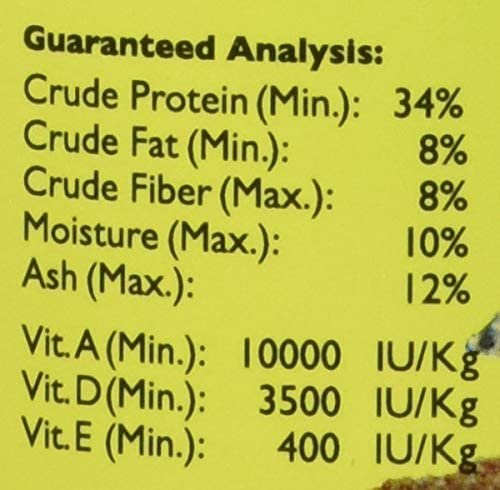I believe that fish are some of the most resilient creatures on the planet.
Even Wardley's so called Algae Discs will keep them alive. lol
Wheat Flour, Wheat Middlings, Fish Meal, Dehulled Soybean Meal, Corn Gluten Meal, Wheat Gluten Meal, Brewers Dried Yeast, Soy Protein Isolate, Ground Dried Spirulina, Fish Oil, Soybean Oil, L-Ascorbyl-2-Polyphosphate (Source of Vitamin C), Calcium Propionate (a preservative), Rice Hulls, Choline Chloride, Betaine, Ethoxyquin (a preservative), Vitamin E Supplement, Calcium Carbonate, Menadione Sodium Bisulfite Complex (Source of Vitamin K activity), Zinc Proteinate, Zinc Sulfate, Niacin Supplement, Biotin, Calcium Pantothenate, Mineral Oil, Thiamine Mononitrate, Ferrous Sulfate, Iron Proteinate, Riboflavin Supplement, Pyridoxine Hydrochloride, Manganese Sulfate, Manganese Proteinate, Vitamin A Supplement, Sodium Selenite, Vitamin B12 Supplement, Folic Acid, Copper Sulfate, Copper Proteinate, Vitamin D3 Supplement, Calcium Iodate.
Even Wardley's so called Algae Discs will keep them alive. lol
Wheat Flour, Wheat Middlings, Fish Meal, Dehulled Soybean Meal, Corn Gluten Meal, Wheat Gluten Meal, Brewers Dried Yeast, Soy Protein Isolate, Ground Dried Spirulina, Fish Oil, Soybean Oil, L-Ascorbyl-2-Polyphosphate (Source of Vitamin C), Calcium Propionate (a preservative), Rice Hulls, Choline Chloride, Betaine, Ethoxyquin (a preservative), Vitamin E Supplement, Calcium Carbonate, Menadione Sodium Bisulfite Complex (Source of Vitamin K activity), Zinc Proteinate, Zinc Sulfate, Niacin Supplement, Biotin, Calcium Pantothenate, Mineral Oil, Thiamine Mononitrate, Ferrous Sulfate, Iron Proteinate, Riboflavin Supplement, Pyridoxine Hydrochloride, Manganese Sulfate, Manganese Proteinate, Vitamin A Supplement, Sodium Selenite, Vitamin B12 Supplement, Folic Acid, Copper Sulfate, Copper Proteinate, Vitamin D3 Supplement, Calcium Iodate.






